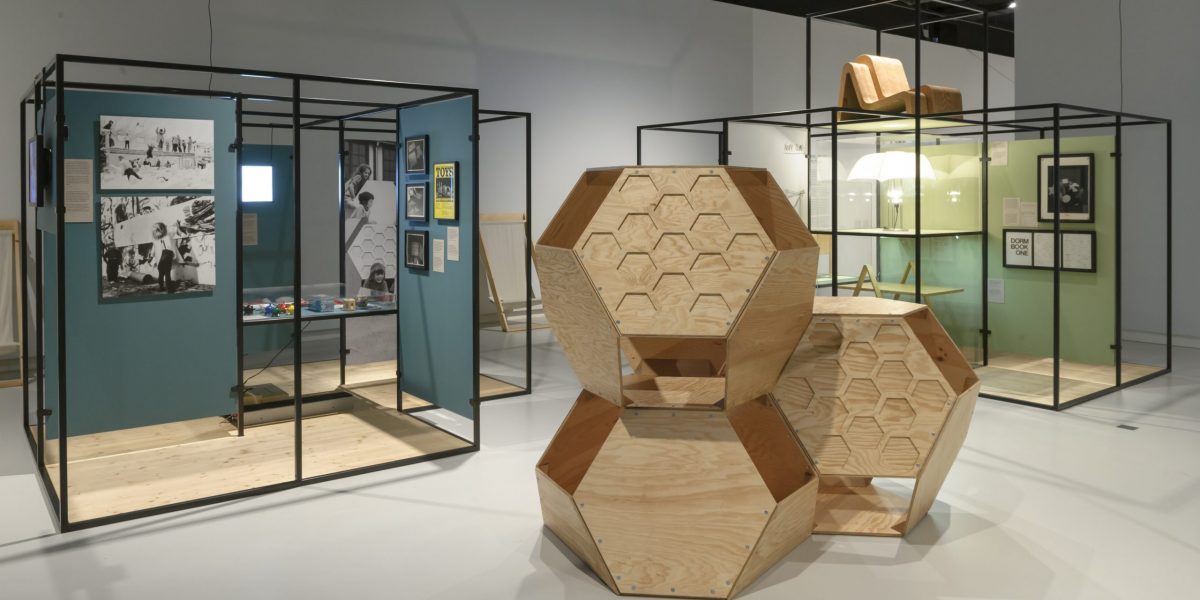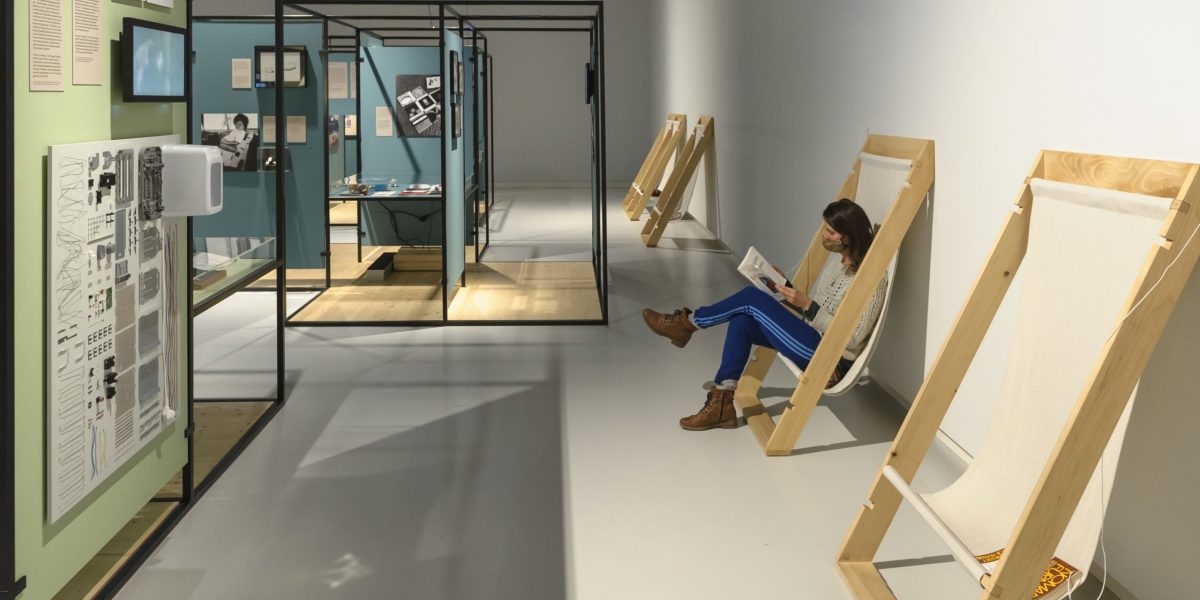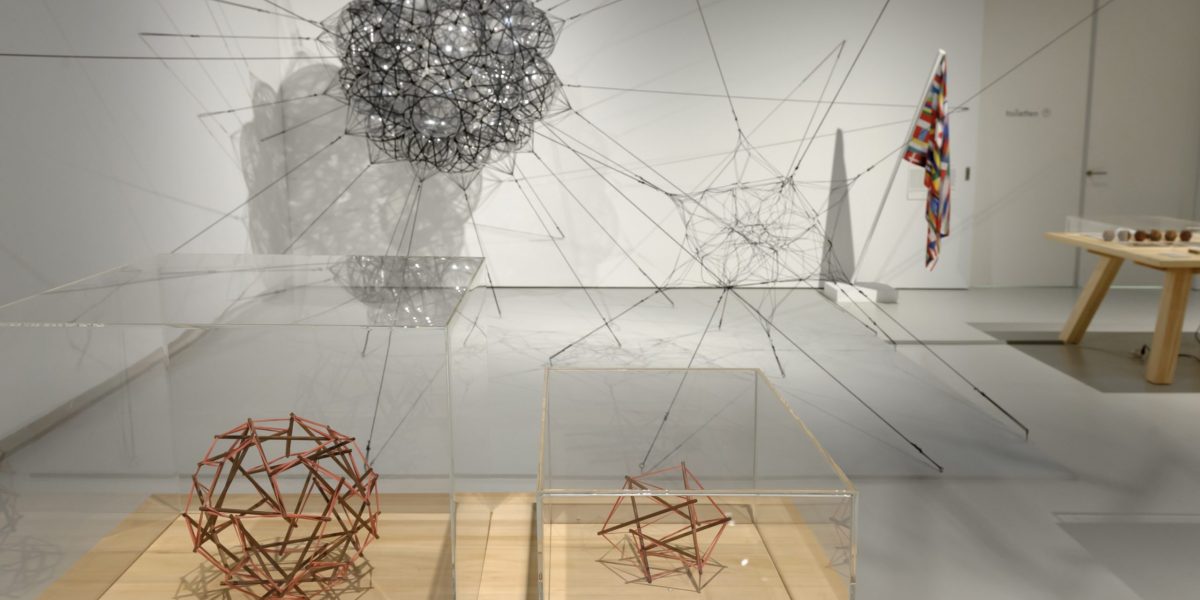The first part of the exhibition ‘Victor Papanek: The Politics of Design’ shows the influences and creative interactions in the life and work of Papanek. Here you will find the exhibition text.

Victor Papanek was not the only figure demanding a greater sense of responsibility in design and its translation into concrete designs. Papanek was part of a larger network advocating design activism in relation to broader social movements and cultural upheavals, which radically altered the United States and Europe in the 1960s and 1970s. Without a doubt he was in the vanguard of this movement, and his ideas have gone on to inspire generations of designers – but he himself found influence in key architects, social thinkers, designers and theorists of the twentieth century.
It is these interactions, the creative connections in Victor Papanek’s life and work, which Victor Papanek: The Politics of Design endeavours to illustrate with a large-scale media installation encompassing films, slides, and other visual material from Papanek’s era as well as a large wall chart. A focal point is the great architect, designer, and visionary Richard Buckminster Fuller; his view of the world as “spaceship Earth”, in which everything is connected, is reflected in much of what Papanek wrote, lectured about, and designed.

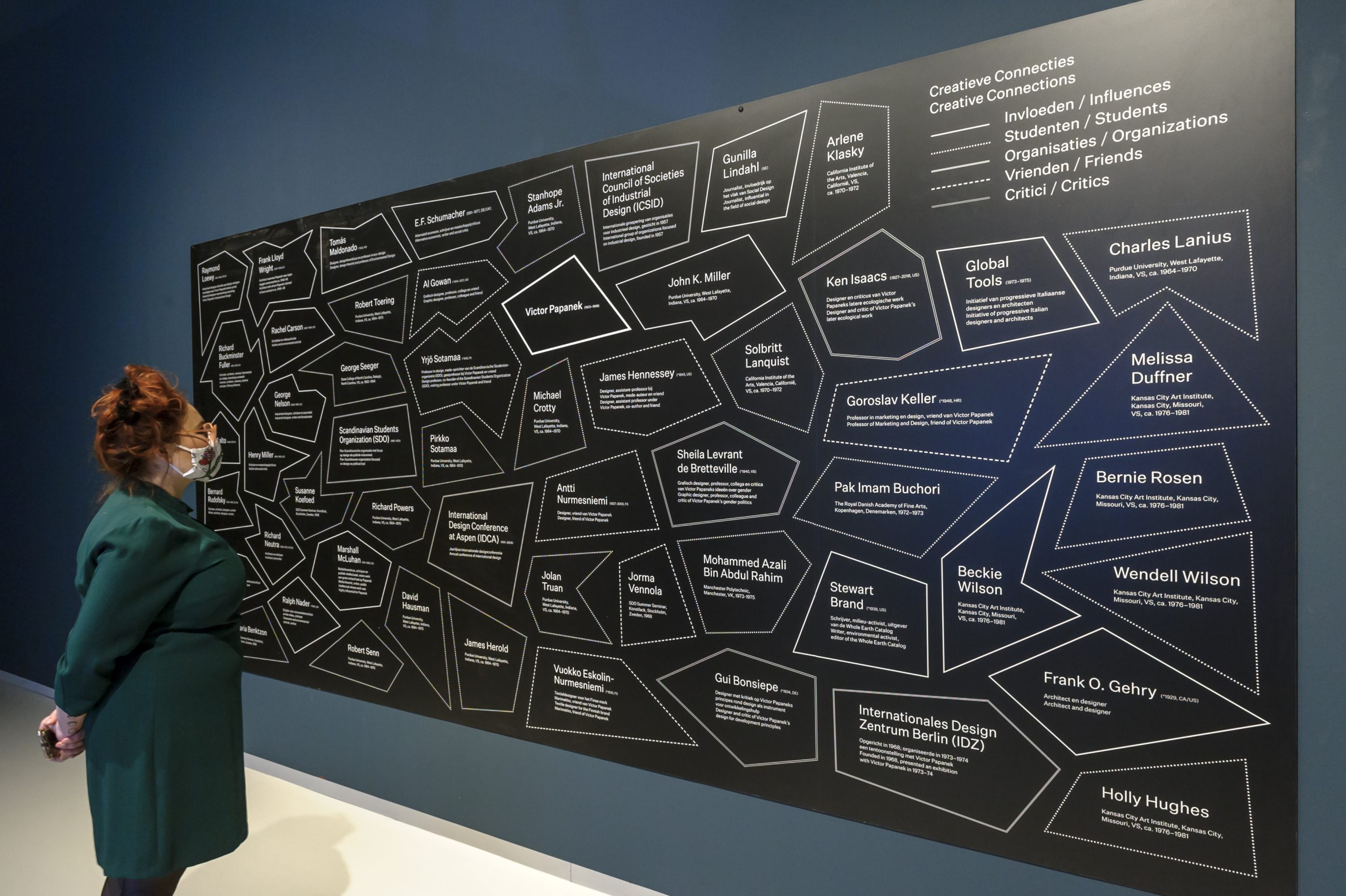
Media theorist Marshall McLuhan, who shaped Papanek’s understanding of the media’s power, played an essential role, too. Also of great significance was the emminent US architect Frank Lloyd Wright who, in the 1920s, had already recognized the interdependency of society, environment, and architecture.
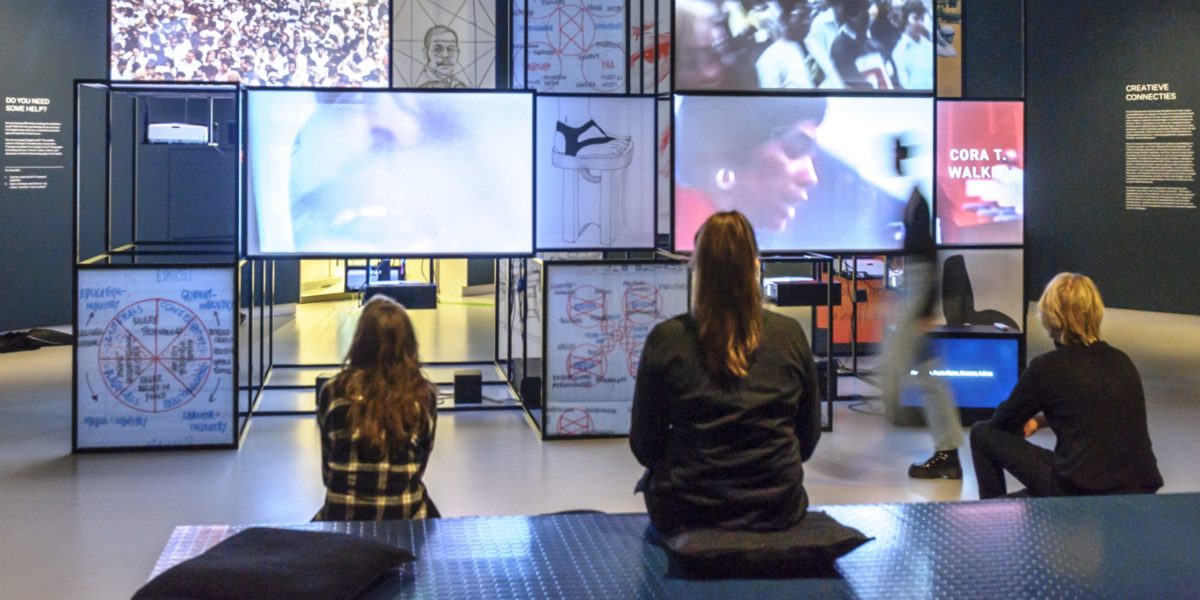
However, the role Papanek’s students played in his life and work should not be underestimated. Papanek’s key work Design for the Real World expresses his gratitude to them: “This volume is dedicated to my students, for what they taught me”. His claim of actually working for the real world was buttressed frequently by the work of his students, each of whom he meticulously acknowledged by name.
